September 20, 2014
I’m undergoing a seismic shift in my natural historizing, it seems. Normally this time of year I’d be out in the field on any morning I can, frantically seeking migrant songbirds (and often failing). Thus far this migration season, which began back in early August for me, I’ve spent virtually no time seriously birding. I’ve been out several mornings with birds in mind, but when avian action was not readily forthcoming, I switched my focus to a more attainable target – insects and other spineless beasts. Two reasons: I could find them, and I could photograph them.
I have this bizarre compulsion that taints everything I do when digging on the natural world – I have to take photographs of whatever I’m seeing, if at all possible. It’s an affliction really, that impacts my ability to just chill the fuck out and groove on nature. Close friends who come to visit me and sit on my porch and watch birds with me have remarked on this on numerous occasions. Do you really need more photographs of northern cardinals? Point taken.
Nonetheless, as some great sage (who I may be related to) once said, it is what it is. One of the many benefits of teaching college is the extended vacations, which allow me to devote most of my energies to some goal I find hard to accomplish during the semester. This past summer, my main goals were to increase my fluency in field botany and to learn to find, identify, and photograph dragonflies and damselflies, the odes of the title (a bug geek term for insects in the order Odonata). In pursuit of odes, I’ve rediscovered my fascination with hexapods of all sorts; insects are so unendingly diverse and intriguing that one could spend a lifetime studying the natural history of insects in Volusia County and still only scratch the surface. On the worst birding days, it’s very rare that you can’t find some interesting arthropods to ponder.
So odes have been a primary focus for me the last several months. But photographing them requires getting fairly close, if one is using a typical macro lens in the range of 100-200mm focal length. Plus, I do a lot of observation and photography from the car, which allows me to cover way more habitat than I ever could awheel. (Is that a word? Afoot, awheel – why not?) Further, dragging my chair out of the backseat and getting self-mobile takes a couple of minutes, so even if the substrate is doable for me, getting out for every photo op just isn’t a workable strategy for me and those of my ilk. Driving close enough to a perched dragonfly to get a reasonable image with my usual insect lens, a 150mm Sigma macro, is pretty tough to do. Dragonflies can be pretty wary beasts. For several years I’ve tried sporadically to take “macro” photos of some larger inverts, like odes, with my main bird lens, a 150-500 Sigma. But at the closest focus distances, I was having a lot of trouble consistently getting sharp images. Sometimes razor, sometimes vaseline.
My breakthrough with odonate photography from the car came in August, when a female mud dauber began building a nest in the tracks of my sliding glass door, and I decided to try and photograph her. She was too high for me to get decent shots with my standard macro, and the angle would be too steep if I shot from right underneath her anyway. I remembered a 20-year old lens I had relegated to the photo gear graveyard soon after I went digital and got the big Sigma zoom. The old lens was also a Sigma, a 400mm 5.6 lens that was the first refractive lens I used seriously for bird photography. For a couple of decades I had wasted my time trying to do bird photography with one of the horrid old mirror lenses, which were cheap for their long focal lengths, but generally produced rather low-quality images. A coincidental meeting at Lake Woodruff NWR with the great bird photographer Artie Morris, who I’d never heard of at the time, enlightened my world. From a distance, I was blown away by the gigantic camouflaged 600mm lenses and Gitzo tripods he and his companion were toting (big-time big lens envy), so when we passed I chatted them up a bit. When I showed Artie my mirror lens rig, he graciously avoided snorting in derision, and suggested I upgrade to a refracting 400 f 5.6. He took a body with his 400 f5.6 Canon lens (his “toy lens”) from around his neck and allowed me to look through it. I was sold, and bought the Sigma 400 soon after.
I used that lens for years when I did slide photography, and it was a splendid lens. Incredibly slow 1st-generation autofocus, with no internal motor, but I never used that when I shot with a film body. But it was renowned for its sharpness, and it was sold as a “Macro” lens. Not really, but it would focus close enough to get to a 1:3 reproduction ratio, which is pretty decent for a lens with that much reach. Perfectly suitable for larger insects. So it occurred to me to drag that old relict out, set it up on a tripod with a soft-boxed flash, and focus on the dauber’s nest, waiting for her regular returns. I was impressed again by the image quality, and the Sigma 400 became my lens of choice for insect photography from the car. I doesn’t have any of the vibration reduction systems typical of long telephotos these days, so handholding it and getting critical sharpness are mutually exclusive. I normally shoot from a beanbag on my car door when doing automotive photography, and that setup is rock solid.
So that’s how I shifted my focus from cruising for birds, which can be abysmally slow in the summer, to cruising for dragonflies, which is usually exactly the opposite. Ode cruising, I call it. And in the process, I began keying in on the other big arthropods that can be spotted and photographed while ode cruising. As it turns out, the most commonly observable and shootable big insects I see are grasshoppers and katydids, of the order Orthoptera. Orthops for short.
So these days, I get more excited about the idea of photographing orthops and odes more than the prospect of photographing birds. Both dragons and hoppers are amazingly intricate and photogenic insects, but I’ve been struck repeatedly by my blatant taxonomic bias – I’d far rather find and photograph odes than I would orthops. Notwithstanding the fact that orthopterans include some of the most striking and beautifully colored insects in the world, and at the other end of the extreme orthops that are exquisitely cryptically colored to blend with their surroundings, an equally astounding feat of adaptation. Still, for me, dragonflies are the shit. It’s an incredibly overused metaphor, but I’ll use it anyway – dragonflies are the attack helicopters of the insect world. I remember seeing Coppola’s opus Apocalypse Now for the first time (and many times thereafter), marveling at the incredible cinematography. While watching with mouth agape as Colonel Kilgore and the air cavalry attack the point where the waves break in both directions (“Charlie don’t surf!) to drop Willard and his PBR crew into the mouth of the Nung, I remember thinking that the Hueys in slow motion were like nothing so much as giant dragonflies. The precision and power of odonate flight is awesome, and they are some bad, badass predators. Seeing one ode munching on another nearly its own size makes me very happy they don’t get any bigger than they do. Magnificent animals.
On the other hand, orthops are the heavy equipment of the insect world, to me. Generally slow, lumbering, inoffensive and unaggressive – all fine qualities for an animal, but not as likely to arouse my intense awe as those of rapid and wary predators. But orthops are charming, colorful and diverse beasts that frequent weedy roadsides, so how could I pass them up?
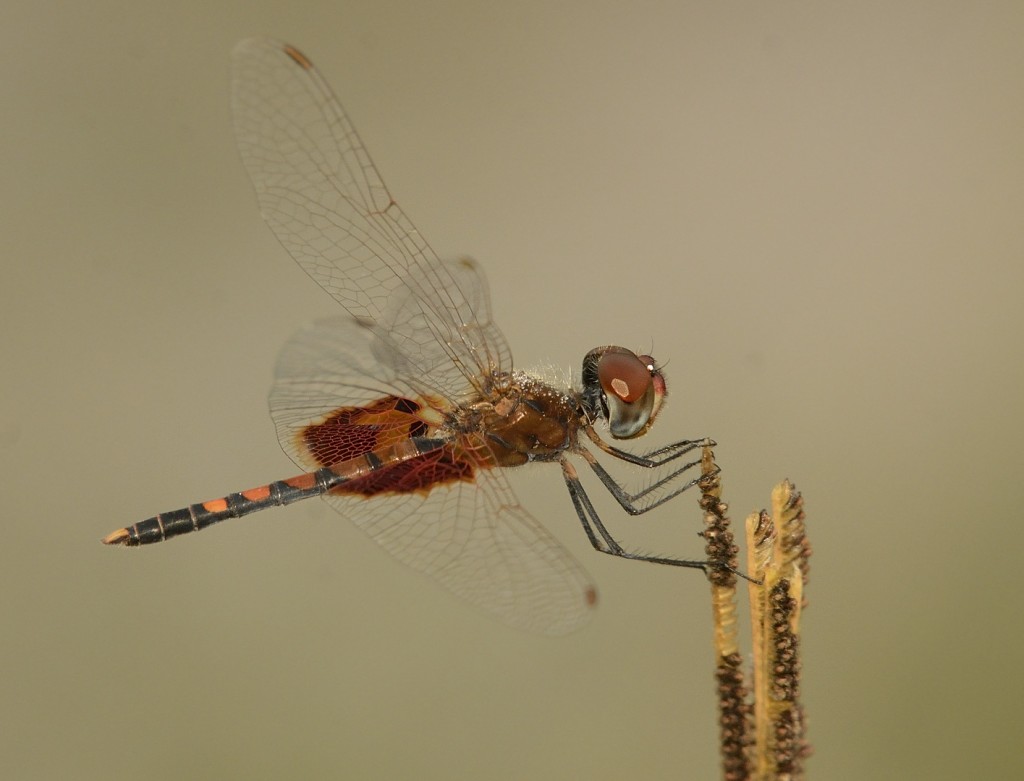
The pursuit of odes provides me a whole new treasure trove of lifer organisms to see and photograph, like this Amanda’s pennant (Cellithemis amanda) I saw for the first time a week ago
And every now and then, I see other cool critters, like spiders, and owlflies. I may be more taken with the spiders than I am with the odes these days. But that’s another post.
One of the unanticipated benefits of immersing myself into new taxa to explore and photograph is that it delivers a big dose of humility. It doesn’t take long to realize how little I actually knew about them before, and how much there is in front of me to learn. And that’s cool.
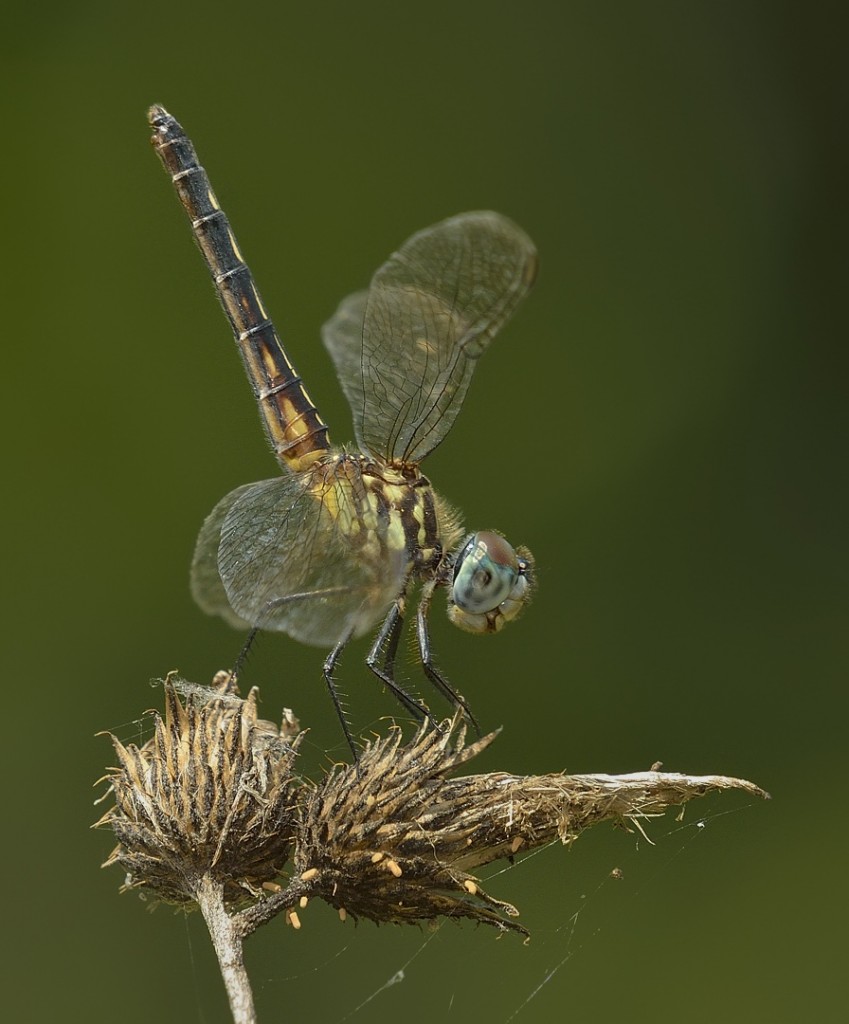
Blue dasher obelisking. In obelisking behavior, the ode points its abdomen directly at the sun to prevent overheating

Things didn’t work out so well for this skimmer. That’s a green lynx spider (Peucetia viridans) that has ambushed this ode from an inflorescence of ten-angled pipewort, Eriocaulon decangulare
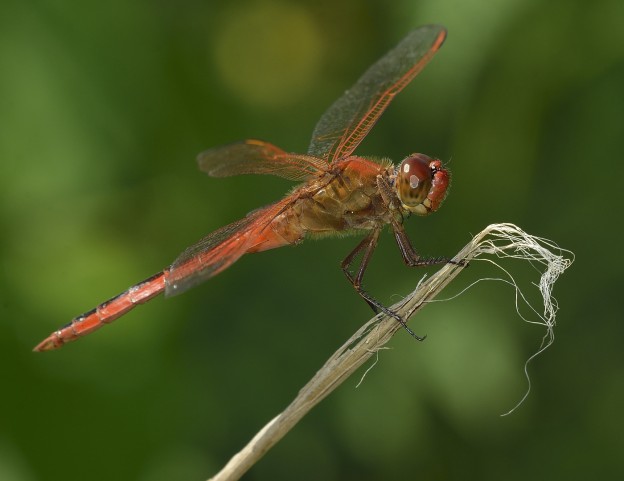
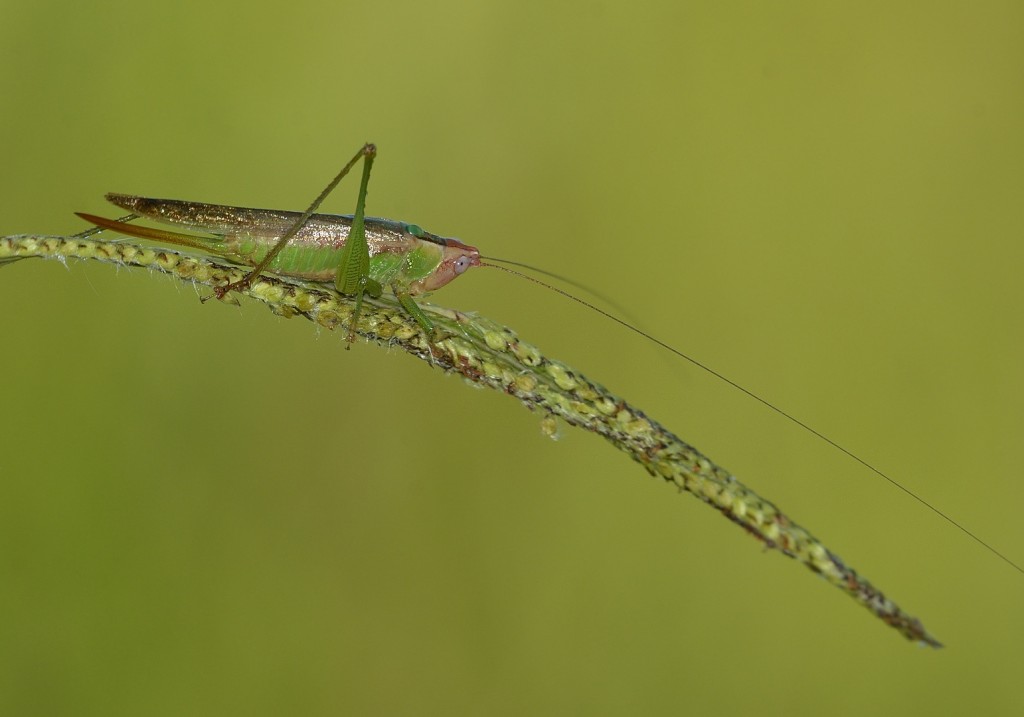
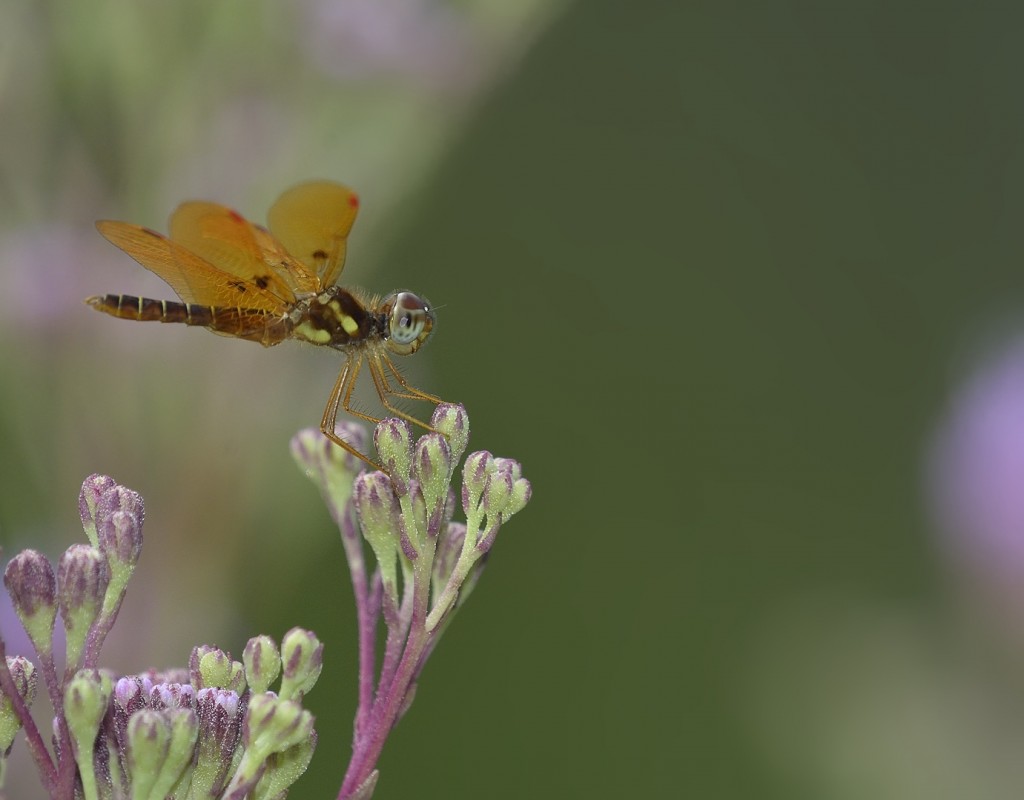
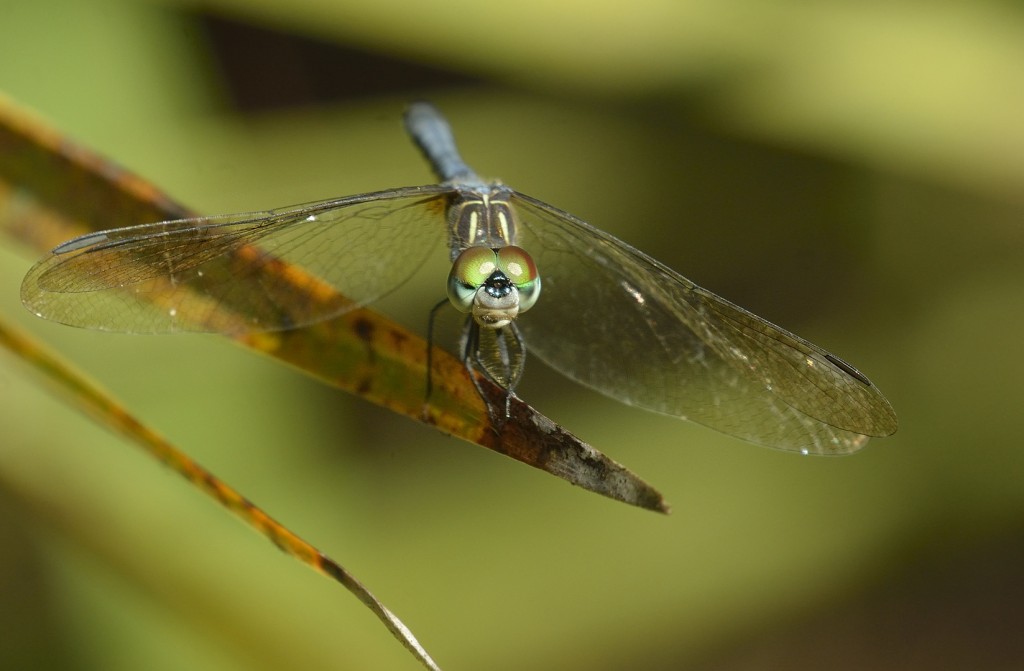
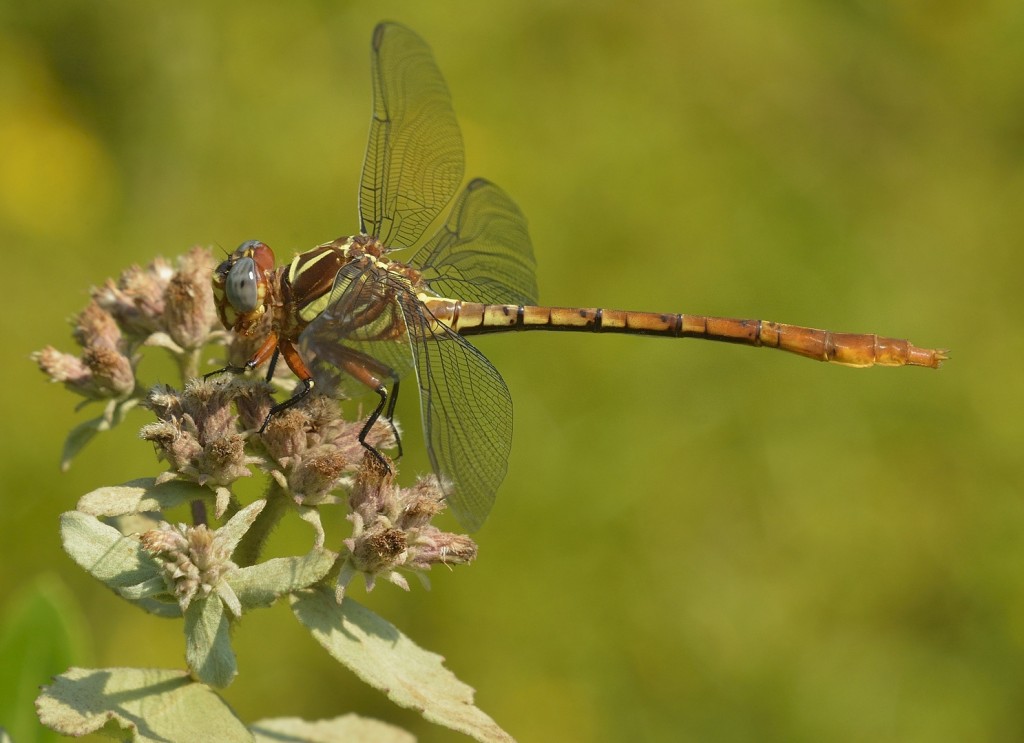
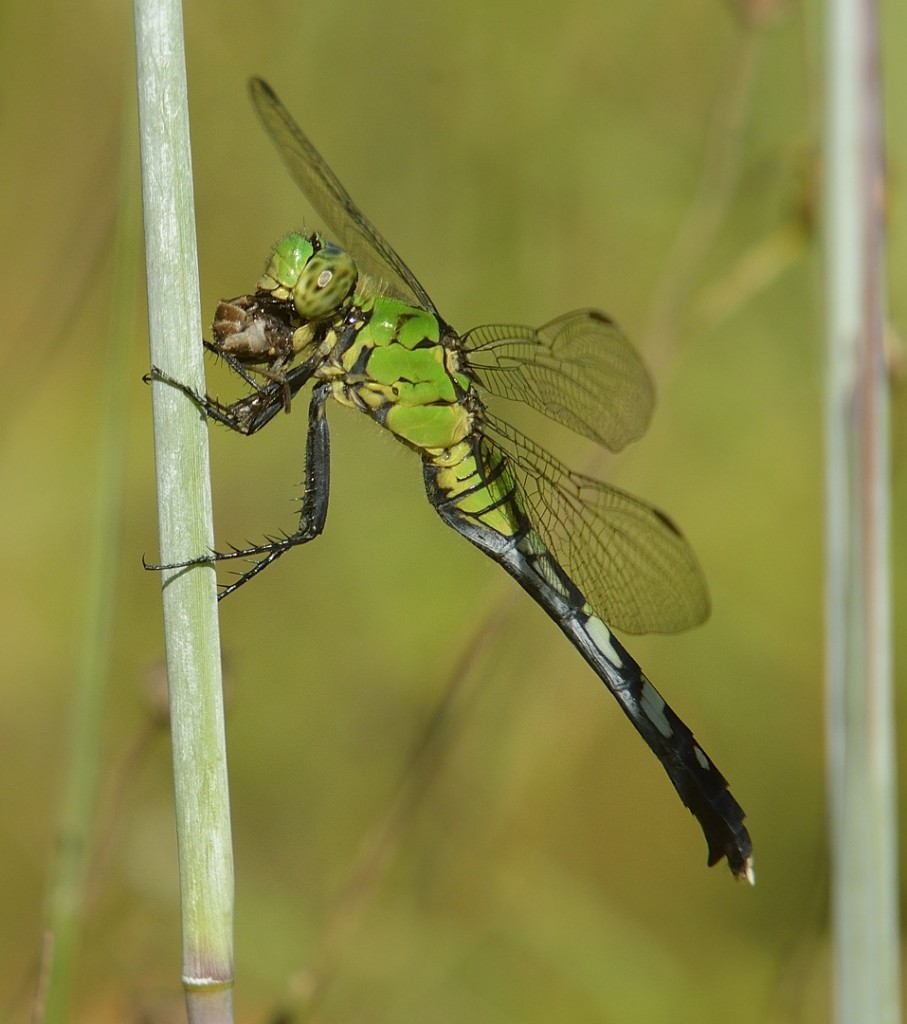
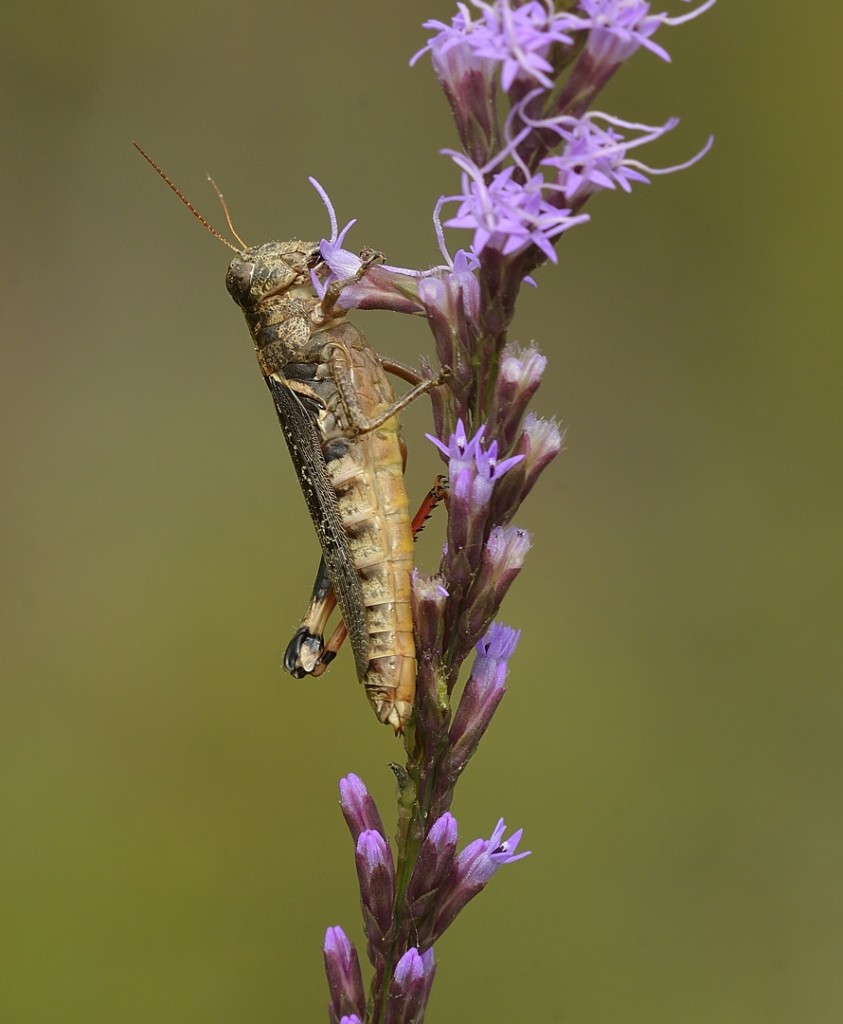
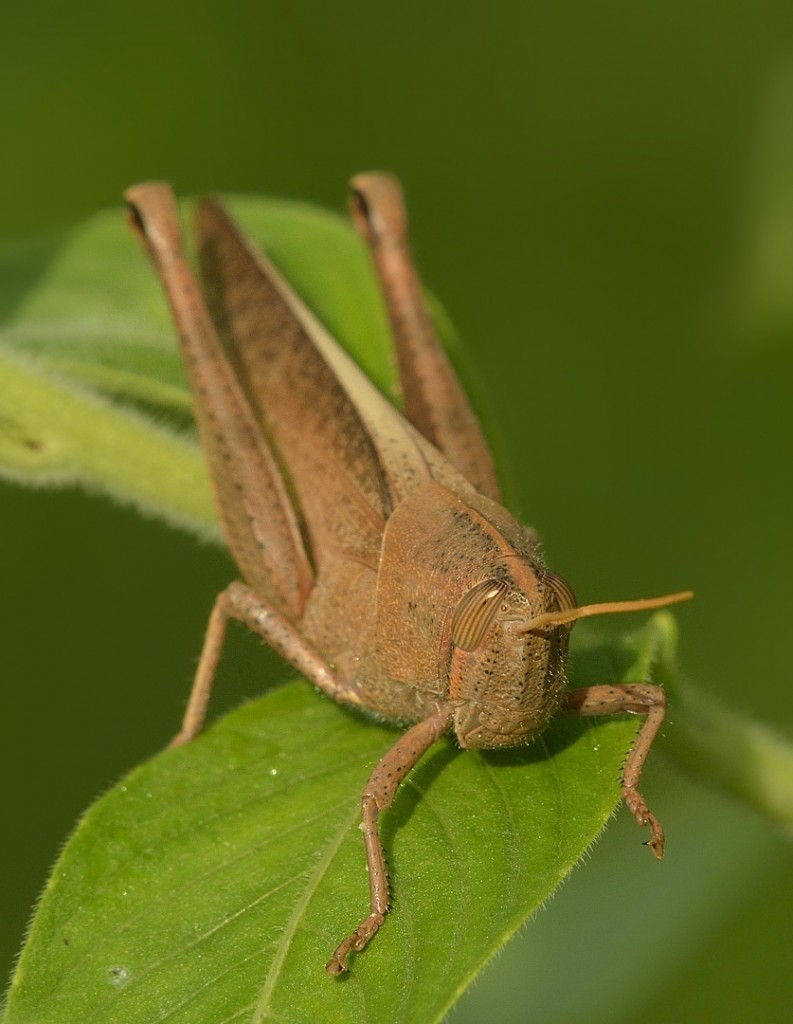
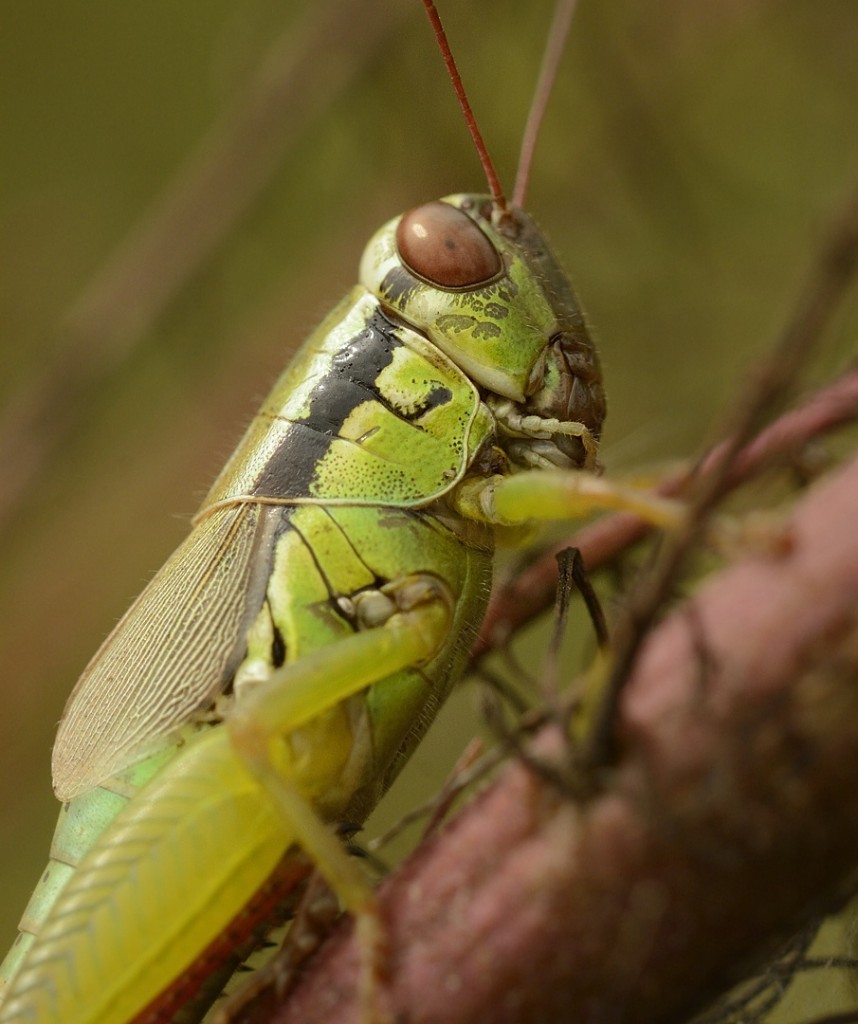
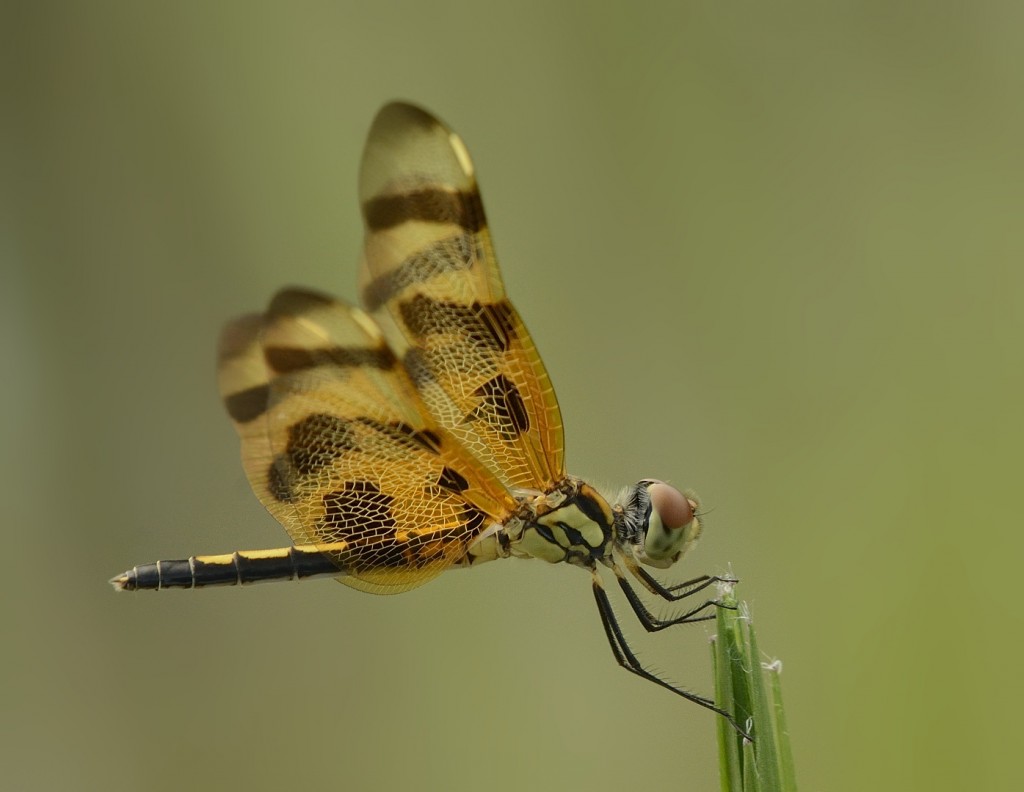
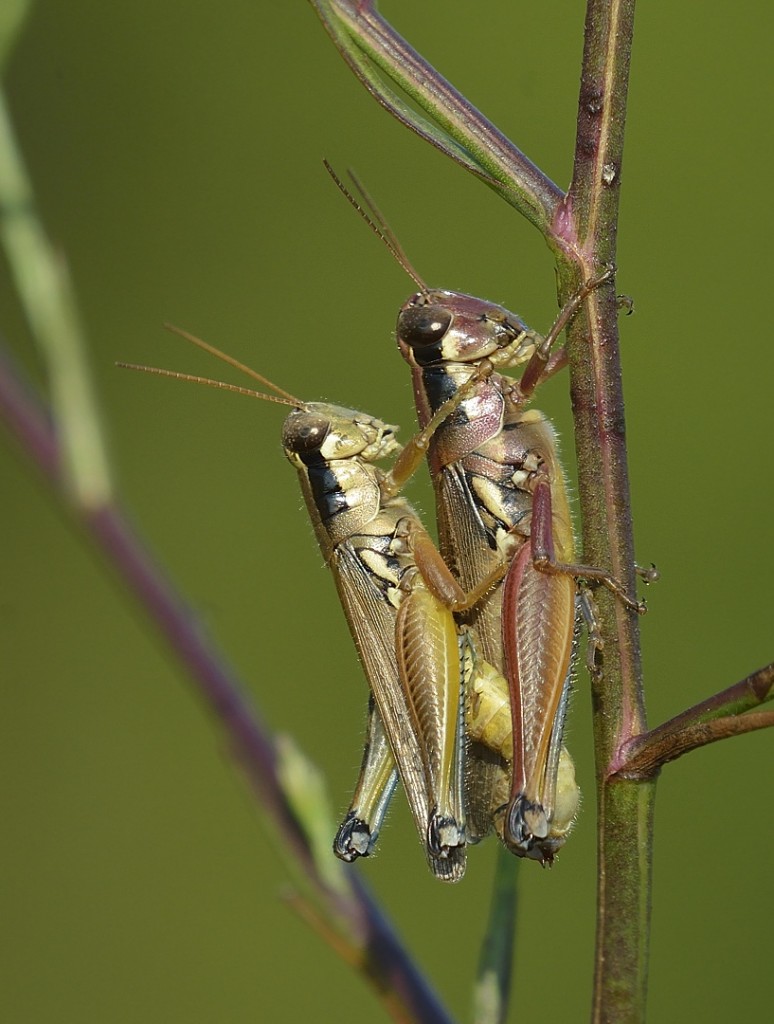
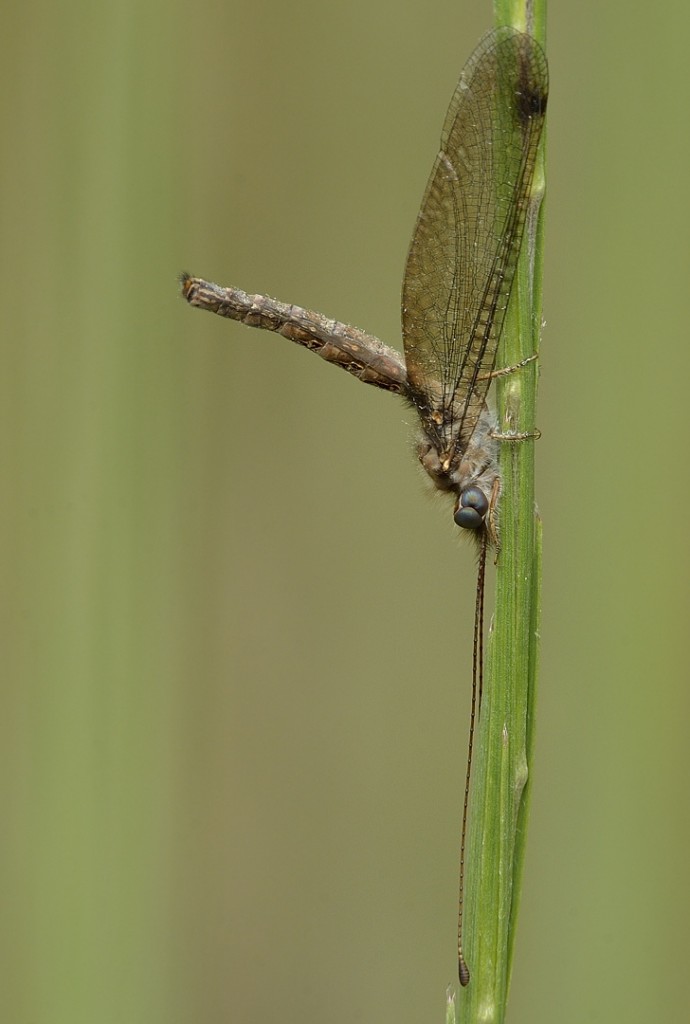
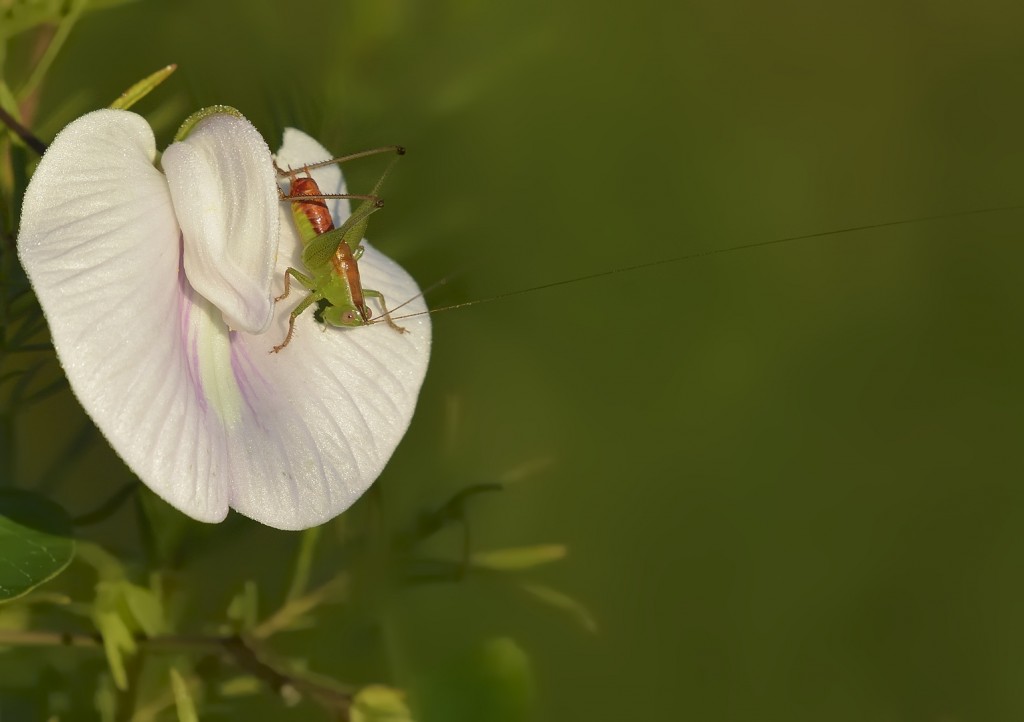
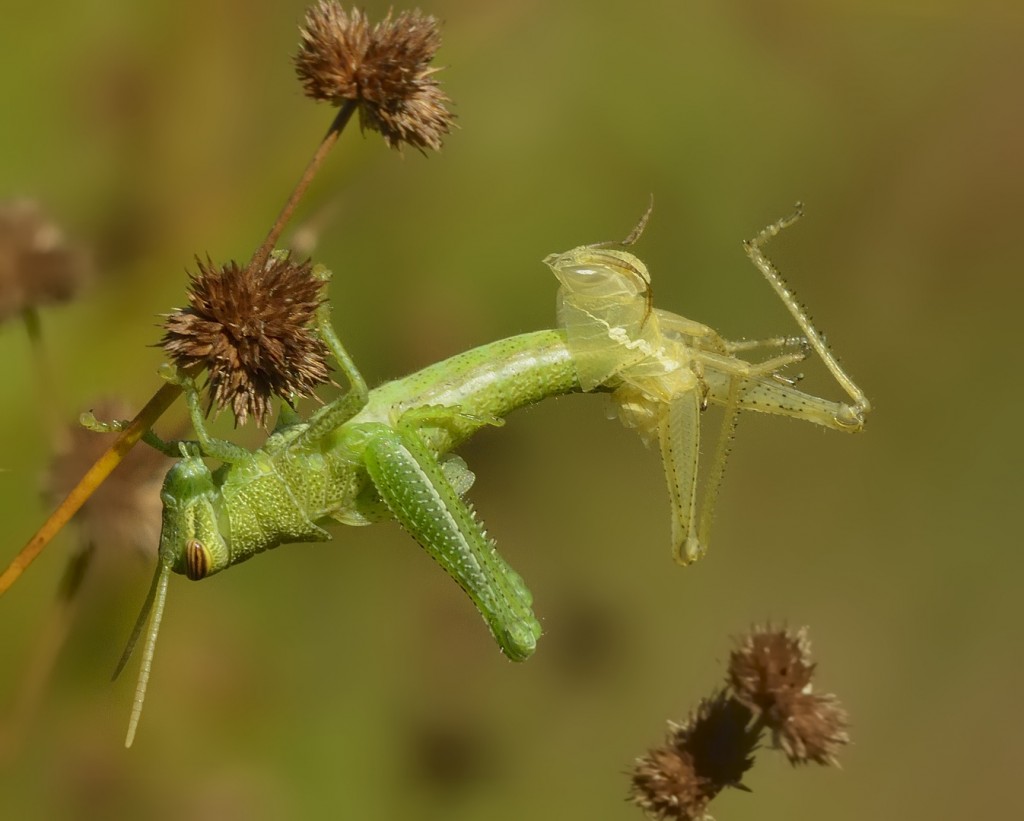
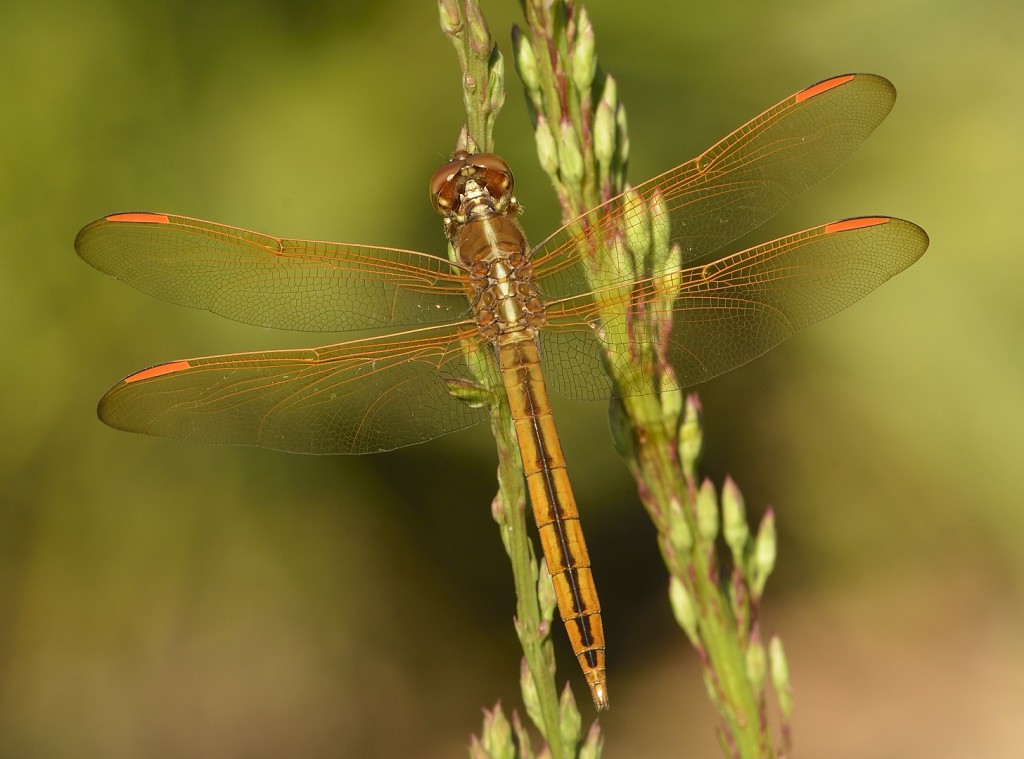
phenomenally beautiful photos…the colors alone are stunning.
Thank you, Deborah
Exquisite!
Thanks, Carole
Superbly done, as always.
Thanks, HT3
Ok. I’m certain you have not forsaken aves observation with the potential time you have for them in the future. Artie Morris I think most recently noted in his blog that he replied to a gazillion questions posed to him (in a day). I have met Artie a few times in the field and consider him an extremely valuable resource for improved wildlife photography. It seems you were attentive to him, Pete. Your images in this article are very good. The one I found most compelling is of course the third above. Wow. Skimmer meets spider and you want to focus on spiders? Enlighten further!
Spiders are next on my to be addressed list, Bob. Thanks for your thoughts.
I like the close up on insects! very nice!
Thanks, Tony
The common names of these creatures reveals a side to entomologists that I wasn’t aware of – “Halloween pennant”, “Mischievous bird grasshopper”, “Immodest grasshopper” – quite poetical! And what the hell is an “owlfly”??? That alone is worthy of another VN post.
Right you are, EE. I’ve found nothing immodest about Melanoplus impudicus, though I must say I think a mischievous bird grasshopper put some sand into my fuel line once. Couldn’t prove it though. Mischievous and sneaky.
Owlflies are neuropterans closely related to antlions. The larvae camouflage themselves with debris and ambush other small insects with their big mandibles.
What stunningly beautiful photos!
Thank you, Darcy